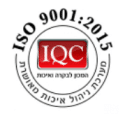
Optoacoustic Imaging
Overview and technology
Optoacoustic imaging enables anatomical and molecular imaging based on the different absorption of tissue and materials in the 660-1300 nm spectrum, the optical part of the method. When a molecule absorbs light it releases the energy in 2 forms, fluorescence, and vibration. The vibration causes ultrasound waves that are detected by the unique detector of the systems. iThera Medical has a clinical and a pre-clinical line of products. The RSOM (Raster Scan Optoacoustic Mesoscopy) and MSOT (Multi-spectral Optoacoustic Tomography) are used for pre-clinical imaging. The Acuity Echo is the clinical version of the MSOT and the RSOM-C is the clinical version of the RSOM.
The MSOT enables full-body optoacoustic and ultrasound tomography at 150/300um spatial resolution while the RSOM provides high-resolution images, 10um, on a 2X2 mm surface area.
Use cases
The optoacoustic technology excels at fast full-body anatomical and molecular imaging. Most technologies today can either image soft tissue or hard tissue, rarely both without the usage of any contrast agents, and require long acquisition times. The MSOT technology takes an image once every 10th of a second making it possible to scan a whole body continuously for kinetics and biodistribution studies over time. The technology is used frequently to observe tumor sizes, vasculature, blood content, oxygenation, biodistribution, and kinetics of injected therapeutics in a variety of organs, from the brain to feet.
Unique benefits:
The MSOT provides one platform for all imaging requirements from pre-clinical to clinical trials. The data collected in each imaging session can be analyzed for understanding how the entire body and organs respond to a disease/treatment enabling measurement of organ size, blood volume, oxygenation, and any infrared molecular probe used.


